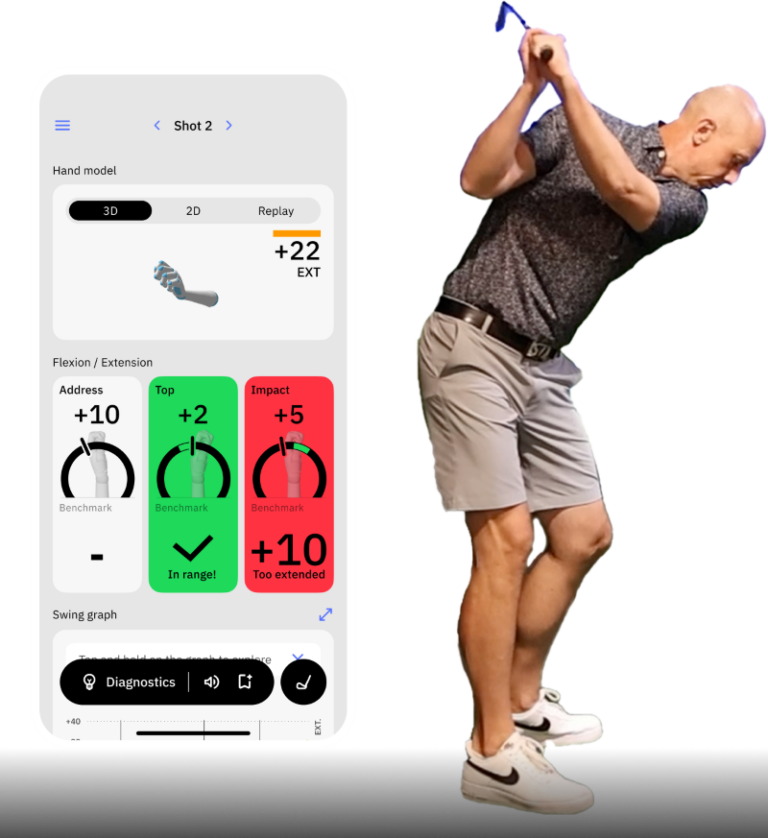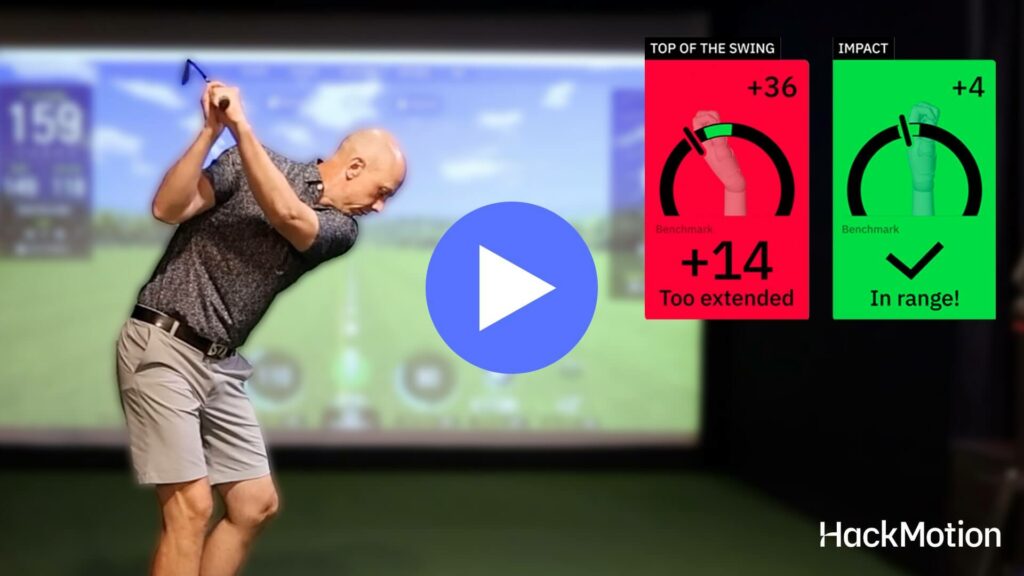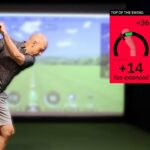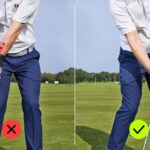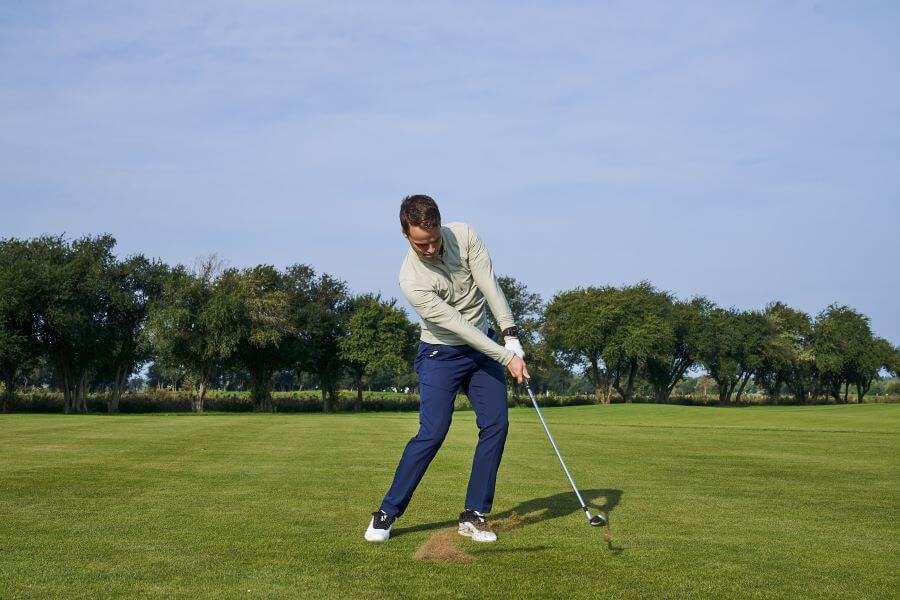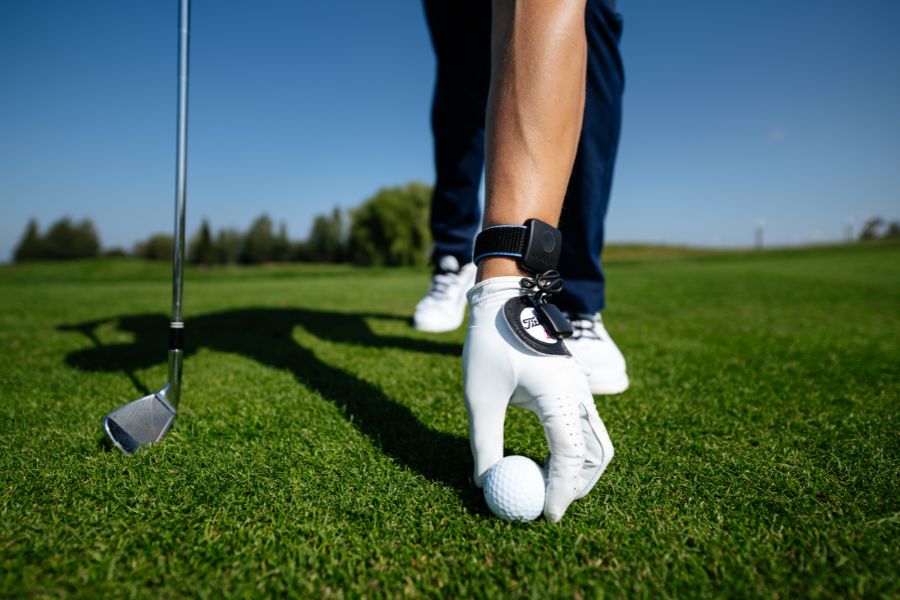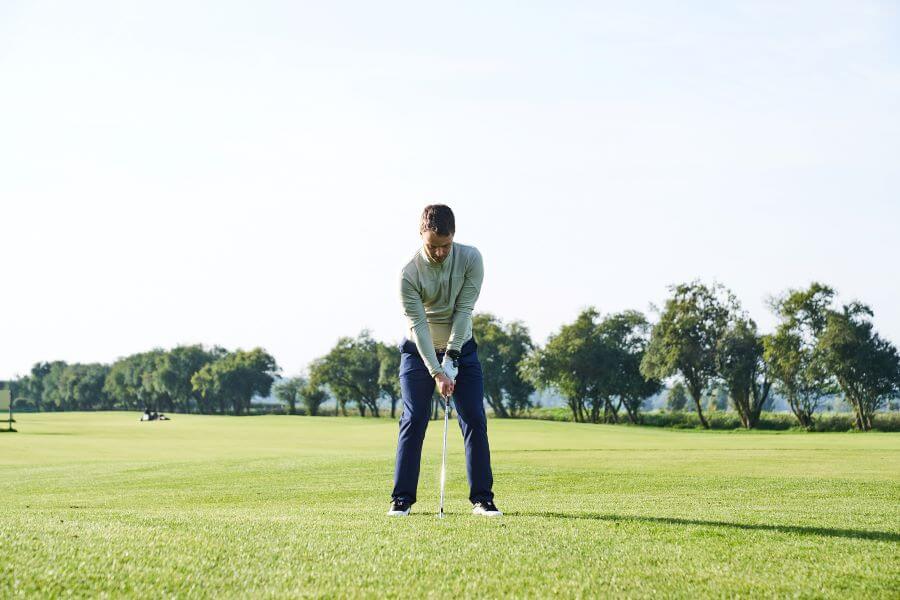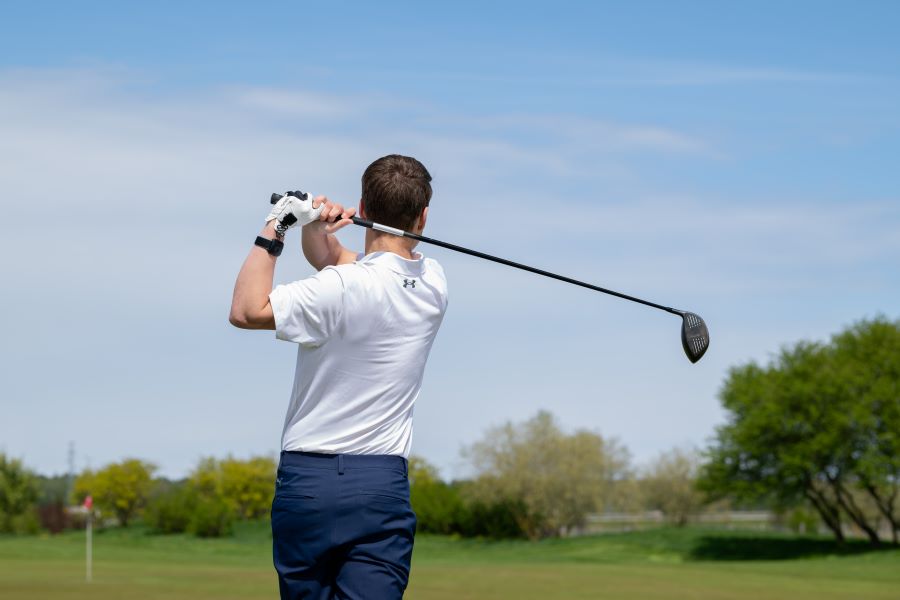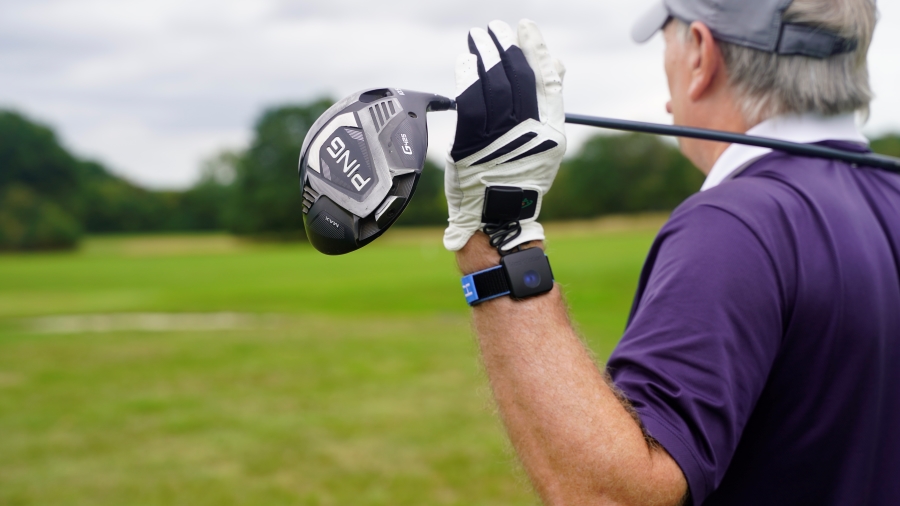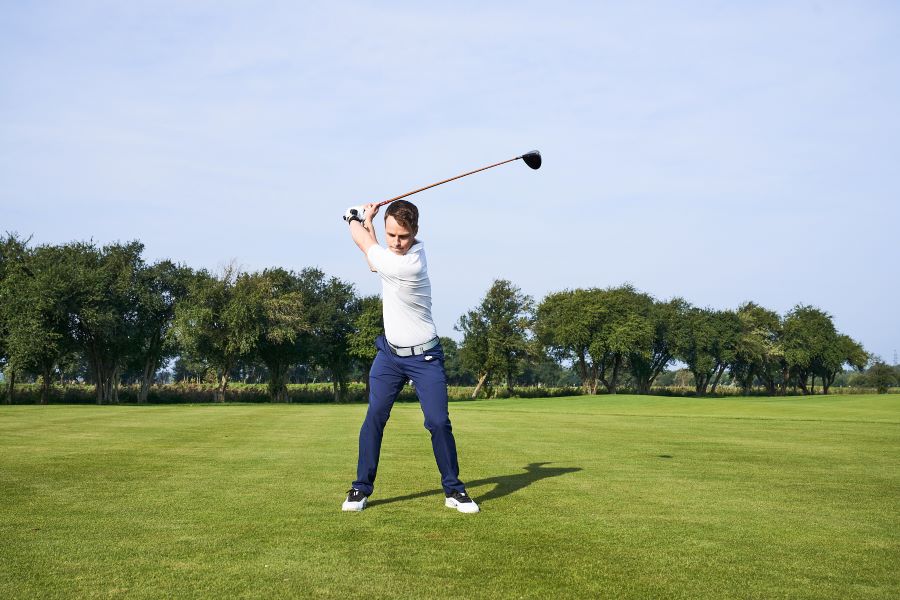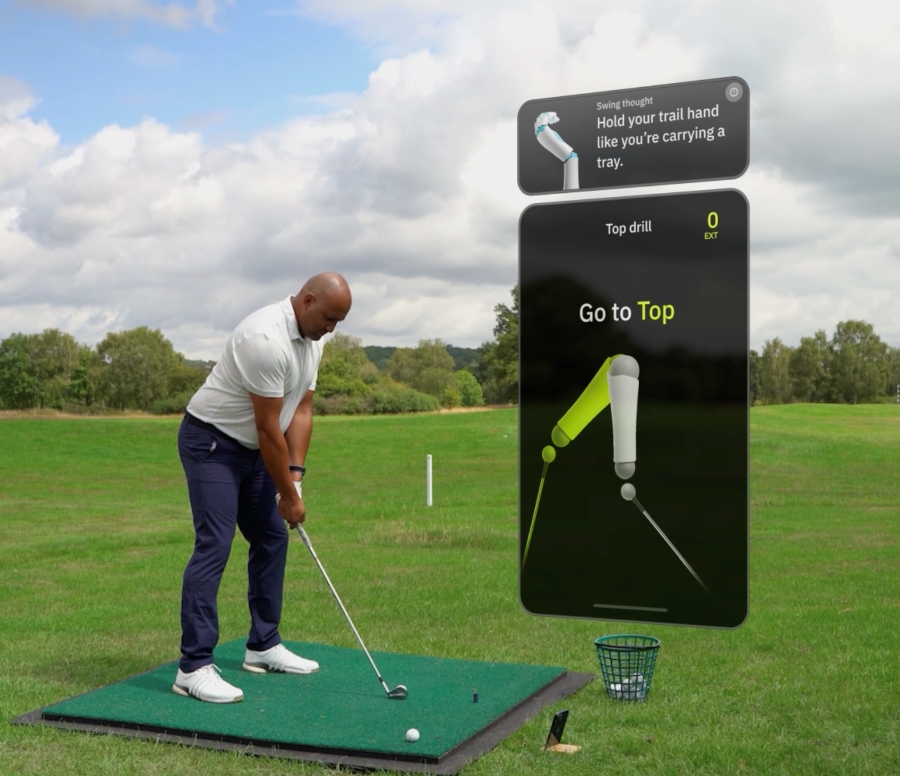How to Hit a Draw in Golf: 5 Simple Adjustments & Drills That Actually Work
The draw is one of the most satisfying shots in golf to hit.
Since your clubface is just slightly closed when you make contact, the draw feels powerful, it has the perfect ball flight, and it curves toward your target with ease.
The problem for most amateur players is that the draw is actually the opposite of their typical fade or slice shot.
Here you’ll learn exactly why you aren’t hitting a draw and things you can do to fix it right now. We have drills, data and more to get you finally turning the ball from right to left.
Hit the Perfect Draw (Key Takeaways)
If you don’t have time to go through our entire guide on how to hit a draw in golf, here are a few of the most important takeaways.
- The swing path should move from inside to outside to help facilitate a draw.
- Adjust setup to allow your body to make an easy transition through impact.
- Maintain a flexed lead wrist at the top of the swing to help keep the clubface closed relative to the path and keep it in this position through impact.
- Modify the grip slightly stronger to aid in turning the clubface over through impact.
- Rotate the body to implement the minor changes.
Contents
5 Proven Tips and Adjustments to Hit a Perfect Draw
Here you can learn the theory behind hitting draws. There are a few adjustments you need to make in your setup and swing path in order to turn the ball over consistently.
These tips outline what experienced players do to hit a reliable draw every time.
1. Set Up to Hit the Draw
Setting up to hit a draw is enough for some golfers. One of the best tips for setting up to hit a draw is to add a little ulnar deviation to the lead wrist.
What this feels like is that you will lift your lead wrist up just a tiny bit at setup.
Practice this now, and you’ll feel that when your wrist comes up, your lead shoulder closes just a bit. This motion can encourage the path that travels a little more from inside to outside.
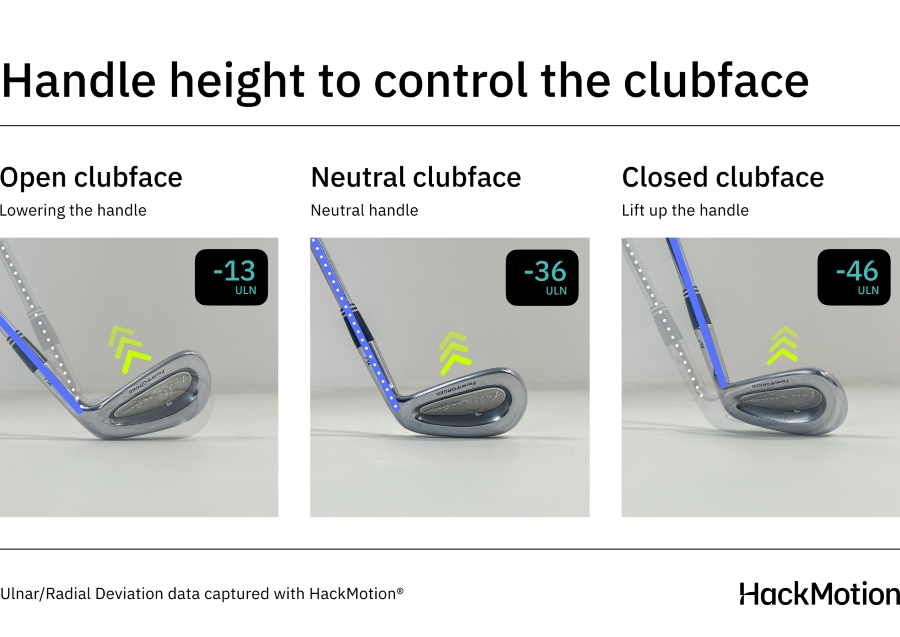
Other setup adjustments include;
- Moving the ball back in your stance
- Slightly closing your shoulders to the target
- Dropping your back foot back just a bit
- Lowering your hands at address to discourage a steep swing
Use the HackMotion to measure the amount you add, and play around with this concept as a simple way to draw the ball.
2. Get the Path More Inside to Outside
To visualize the correct path in your golf swing, it’s best to use alignment sticks. Take two alignment sticks to the range with you to start working on your draw shots.
The draw is easiest to hit when you take the club a little inside on the way back and swing out to the target on the follow-through.
This motion of inside to outside (with a slightly closed clubface) causes the draw.
You should pay attention to your path, which is one of the first motions in your backswing. If the club gets too far outside on the takeaway, you may never get it to a position where it can swing out on the follow through.
3. Your Lead Wrist Must Be Flexed
A slightly bowed lead wrist position at impact will help you hit a draw.
We have analyzed more than 1,000,000 golf swings using the HackMotion wrist sensor.
One of the most common mistakes amateur players make is increasing the amount of extension (cupping) in their lead wrist from setup to the top of the backswing.
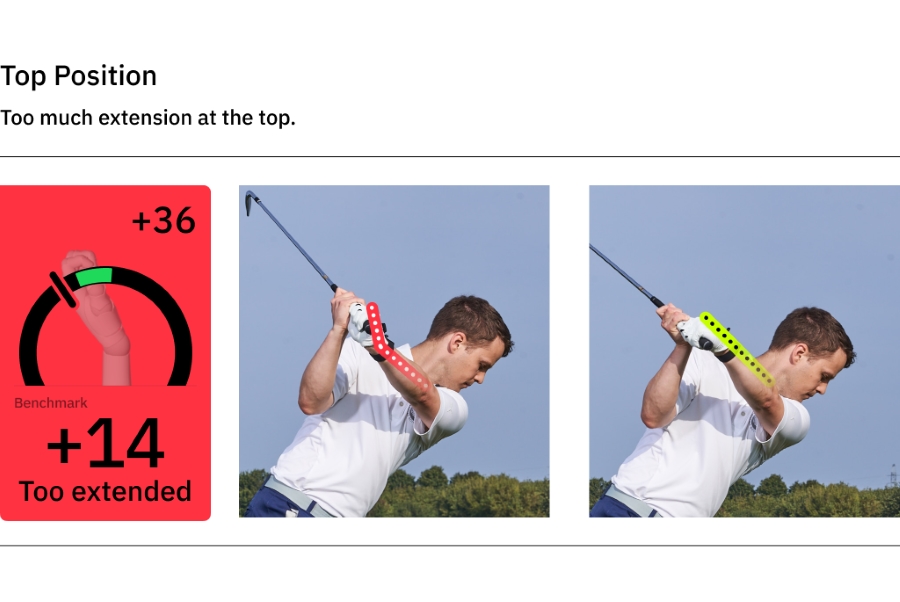
Once they are at the top of the backswing with this extended wrist position, it’s very hard to swing through the ball and make solid contact with a slightly closed clubface.
Great players have a flat or even slightly bowed wrist at the top of their backswing. We see players like Dustin Johnson and Collin Morikawa get to this position.
From there, they can fire their lower body through the ball and maximize distance and consistency.
4. Strengthen the Grip a Bit
Having a slightly stronger golf grip can also help you hit a draw.
Getting the trail hand a little more on the underside of the club makes it easier to turn the club over through impact.
Again, when you make these grip changes, they must be subtle, or you will start hooking the ball.
Make a small adjustment at first, and then continue to strengthen if you feel it’s helping you turn the club over and hit the draw.
5. Set Your Equipment to Work For You
For any adjustable golf clubs you have in your bag, make sure they are set toward a draw bias. To do this, you will want to shift weights toward the heel.
Moving the weights towards the heel of the clubhead helps promote a faster closure rate of the clubface during the swing, which can produce a draw.
Take your adjustable clubs (hybrids, fairway woods, drivers) to the range and make some adjustments to the club to make it more draw-biased.
See if you can find that sweet spot that just lets you make a simple stance or grip adjustments and hit the draw shot you want.
Drills to Master the Draw in Your Golf Swing
Knowing hot to hit a draw is not enough to start using it on the golf course, you must train your body the old fashion way, with practice.
To keep you focused, start with these drills. As you practice more, your Hackmotion will be able to make personalized suggestions to help you improve quickly.
Headcover Drill
Controlling your swing path is crucial. You will never hit a draw with an out to in swing.
This drill may seem simple but the results speak for themself. Be sure to start every practice session with this drill to educate your body on what you expect.
- Video Timestamp: 2:40 – 5:23
Headcover Drill – Step by Step
- Lay down two head covers; one behind the ball and inside your target line, the second in front of the ball and outside your target line.
- Before hitting balls, take a few practice swings to ensure you’ll be able to swing between the head covers without hitting them.
- Next, hit balls without worrying too much about the ball flight, the goal here is to create an in to out golf swing.
- As you improve, you can adjust the head covers to make it more challenging.
Alignment Stick Whip Drill
To get the correct wrist movement its best to use Hackmotion but if you don’t have one yet, you can use this drill.
It will teach you to proper feeling at full speed during the most important part of the swing; the impact zone.
This drill you can do at home as well since it does not require a ball or even a club. If you don’t have an alignment stick, you could substitute but holding a golf club upside down. Although not quite as effective, it’s better than nothing.
- Video Timestamp: 5:39 – 7:25
Alignment Stick Whip Drill – Step by Step
- Take your normal setup while holding an alignment stick or a golf club upside down.
- Take a fast swing and take note of where you hear the stick cutting through the air—the ‘whoosh’ noise.
- If you hear it at or before the ball then you are releasing your wrists too early and most likely causing pulls or hooks. You should hear the noise just past the impact zone.
Body Rotation Drill
The golf swing is more than just arms and wrists. In order to be consistent those technical issues must be driven by the body’s bigger muscles.
This drill helps you put it all together by rotating the torso and lower body. Once you have become comfortable with all the small adjustments, this drill will ensure you can take your practice to the course.
- Video Timestamp: 8:15 – 11:12
Body Rotation Drill – Step by Step
- Take your usual setup with a club of your choosing.
- Place a small basketball or object of equal size between your forearms.
- While keeping the ball in place take your draw swing to ensure all adjustments are being activated.
- You don’t need to take a full swing, three-quarter swings will be fine since the focus should be on your swing path through impact to create draws.
Final Thoughts
At this point, it’s time to head out to the driving range and practice.
Bring your HackMotion with you and pay close attention to the amount of flexion in the lead wrist. If you find that your wrist is more extended than flexed, it could be why you are not hitting a draw.
Spend time on the range perfecting that position at the top of the swing, and you’ll then get it right as you swing through the golf ball as well.
A draw is a long golf shot that feels great coming off the clubface; use these tips to incorporate it into your golf game.
